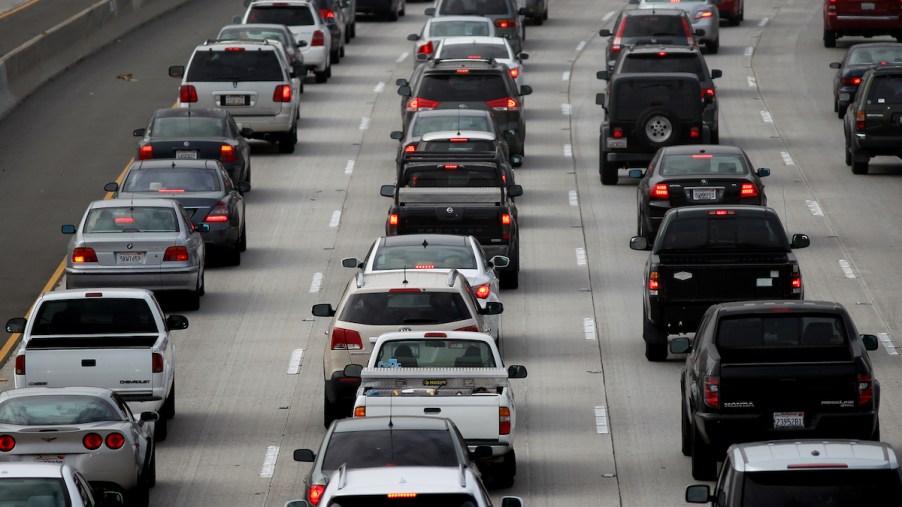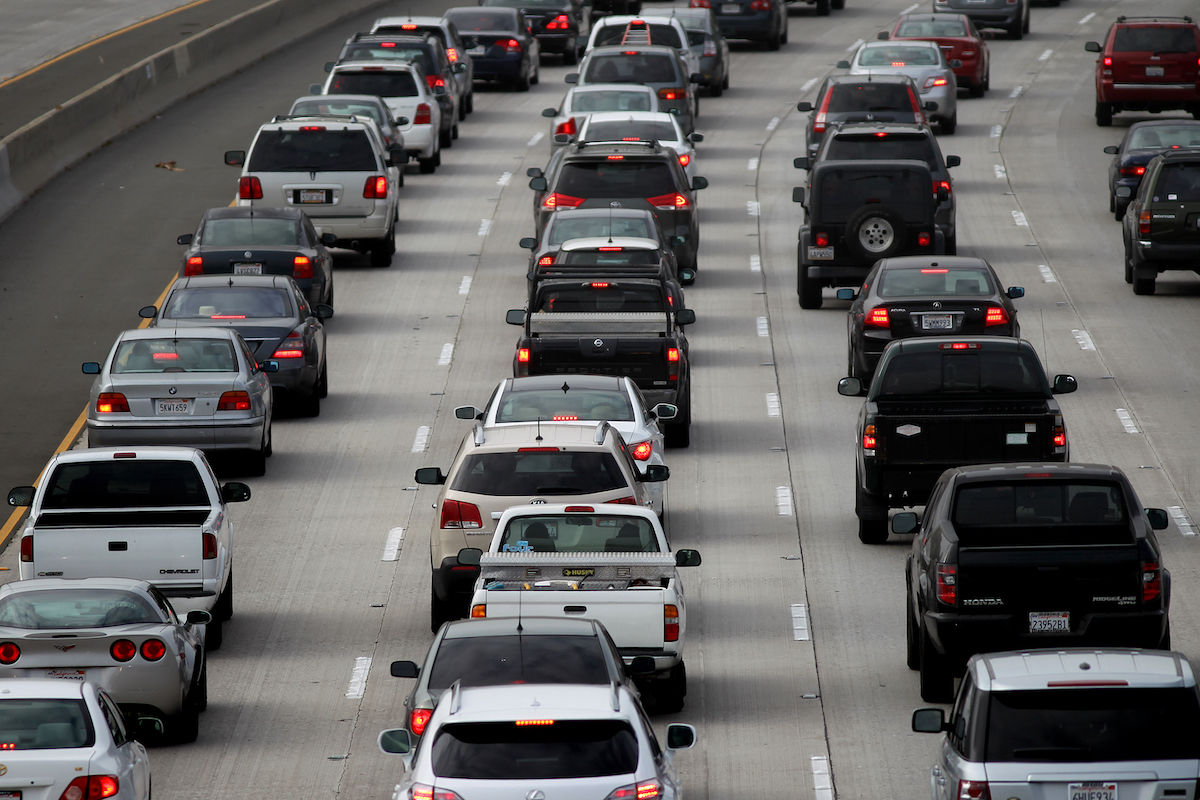
The Number of Cars on U.S. Roads Has Jumped by Over 10 Million in Only 4 Years
Americans pride themselves on their freedom to travel. In the United States, either you have a vehicle of your own or you’re at the mercy of public transportation, which is lacking or limited in most places around the country. That being the case, the number of cars on U.S. roads increased by over 10 million in just the past four years.
The biggest source of greenhouse gases stateside is the transportation sector, with most emissions coming from vehicles. Planning to reach net-zero emissions by 2050, America clearly needs to make changes.
How many cars are there in the U.S.?

According to Statista, as of the third quarter of 2021, almost 284 million vehicles are on U.S. roads. From the third quarter of 2020 to the third quarter of 2021, 16.1 million new vehicles were registered. During the same period, as many as 43.4 million used vehicles changed ownership. The average age of a vehicle in the United States jumped to over 12 years in 2021.
The automotive market has taken some hits in the past few years, partly because of market disparities.
Average selling prices for new vehicles rose from almost $35,000 in 2016 to just under $39,000 in 2020. That’s partly because the pandemic contributed to supply chain issues and parts shortages. So many consumers elected to buy used vehicles instead. As a result, the average price of a used vehicle rose to around $24,500 by mid-2021 and almost $28,000 by year’s end.
The first quarter of 2020 saw a dip in the volume of cars in use because of the pandemic. Since then, the number rebounded and climbed by more than 10 million.
The U.S. transportation system relies on cars
The BBC recently reported that since the mid-20th century, federal funding for transportation in the United States mostly goes toward developing infrastructure for cars like highways. Most U.S. cities use a 1950s-style blueprint for car-dependent large subdivisions.
According to Ethan Elkind of the climate program at the University of California, Berkeley’s Center for Law, Energy, and the Environment, we’re “locked into it.” The result is that people in the suburbs are becoming more isolated.
Up to this point, biking, public transportation, and walking have been pushed to the back burner. To what extent the recent Bipartisan Infrastructure Deal will change things remains to be seen.
What’s striking is that over three-quarters of Americans drove to work alone in 2019. Most vehicles have combustion engines and emit an average of over five tons of CO2 every year.
The U.S. lags behind China and northern European countries in selling electric vehicles. Only 2% of new U.S. vehicles sold in 2020 were EVs. In Norway that year, about 75% of all new cars sold were electric.
America’s quest to tackle vehicle emissions
The shift away from gas-powered vehicles to EVs is one way America can combat carbon emissions. President Biden has set the goal of 50% of all new vehicles sold being zero emissions by 2030 versus only 2% today.
According to a climate analysis from the nonprofit Climate Action Tracker, if the United States is to remain compliant with the Paris Agreement, it will need to move closer to 100% of new cars being electric. The carbon footprint of an EV, including its production, is less than its gas-powered counterpart in the U.S.
But the switch to EVs isn’t without challenges. Reducing climate-warming gases only by moving to EVs would put tremendous strain on the electricity grid. The electricity use would also become half of our national demand and bring more potential shortages and challenges.


